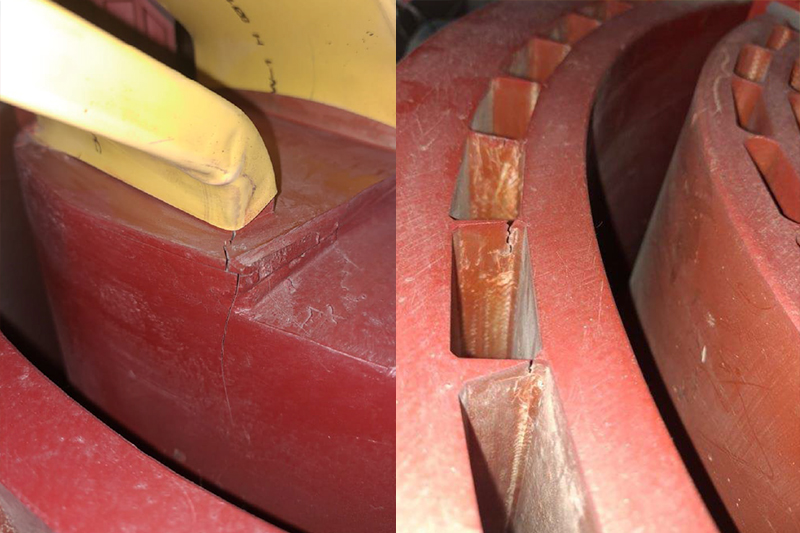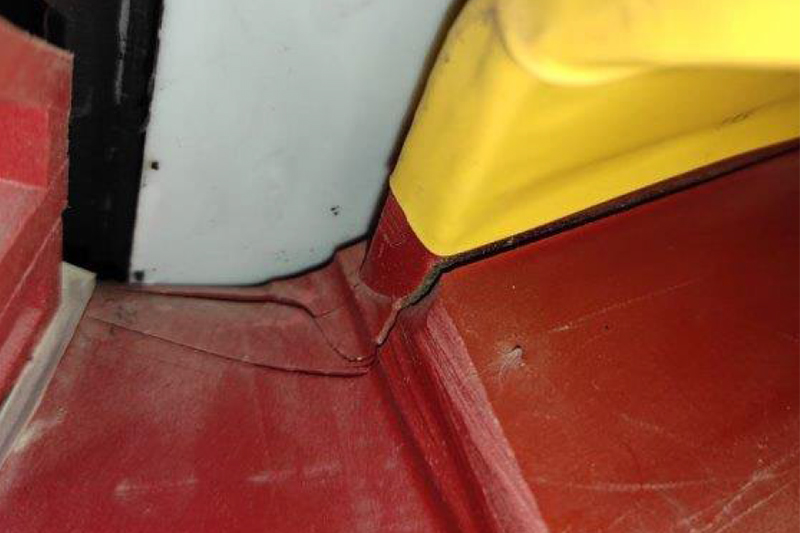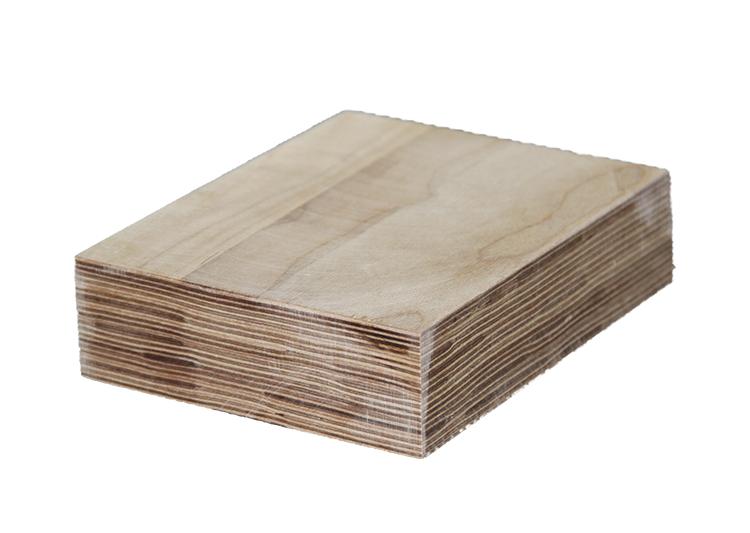Treatment Methods for Cracks in the Steel Core Insulation Layer of Dry-Type Transformers
1. Problem Description
Dry-type transformers are widely used in urban power grids, commercial buildings, rail transit systems, and high-rise facilities due to their oil-free, environmentally friendly, and flame-retardant properties. During long-term operation, the steel core inside a transformer plays a key role in magnetic conduction, while the insulation layer on its surface prevents electrical short circuits, dielectric breakdown, and ensures safe operation. However, due to drastic environmental temperature changes, load fluctuations, and aging of materials, the steel core insulation layer is prone to cracking, which may compromise the transformer’s operational reliability.
Such insulation cracks typically appear after several years of service and are especially common in environments with significant temperature fluctuations or harsh conditions. Once cracks form, they may cause insulation failure, partial discharges, abnormal temperature rise, or even serious electrical faults. Therefore, timely detection and treatment of insulation cracks are essential for ensuring the stable and safe operation of dry-type transformers.

2. Causes of the Problem
1. Impact or Vibration During Transportation
During the delivery and installation process, improper loading, insufficient fixation, or rough transportation can generate excessive mechanical stress, leading to micro-damage or potential cracks in the insulation layer. These damages are often not visible initially but develop over time into visible cracking during operation.
2. Thermal Expansion, Contraction, and Material Aging
During daily operation, the transformer’s internal temperature fluctuates with varying load conditions. This causes the steel core and insulation layer to repeatedly expand and contract, eventually leading to stress fatigue and surface cracking. Additionally, in environments with high humidity, pollution, or elevated temperatures, insulation aging accelerates, reducing the material’s adhesion and mechanical strength, making it more susceptible to cracking.

3. Treatment Methods for Insulation Cracks
1. Patching the Insulation Layer
For minor surface cracks or micro-cracks, localized patching is a simple and cost-effective solution. It avoids disassembling the transformer and minimizes downtime.
Typical steps include: thoroughly cleaning the cracked area to remove dust, oil, and aged material; using specialized cleaning agents and surface polishing to improve adhesion; applying epoxy-based insulation paint or high-temperature-resistant resin over the cracked area to form a protective layer; and curing the coating by heating or air drying to restore insulation strength and prevent crack propagation.
2. Replacing the Insulation Material
For severe or deep cracks where the insulation has become brittle, discolored, or carbonized, patching alone is insufficient. In such cases, replacing the insulation material is recommended.
This involves: shutting down and ensuring the unit is de-energized; opening the core casing and removing the damaged insulation; cleaning and drying the steel core thoroughly; reapplying high-strength, heat-resistant insulation materials such as aramid paper or epoxy fiberglass fabric; and then curing the material to ensure firm adhesion and long-term reliability.
3. Enhancing Routine Maintenance
Preventive maintenance plays a critical role in avoiding insulation cracking. Routine actions include periodic testing of insulation resistance, dielectric loss, and infrared temperature scanning to assess electrical health.
Quarterly inspections should include internal dust removal, tightening of fasteners, and controlling ambient humidity. During high-temperature seasons, ensure adequate ventilation and cooling. If early signs such as discoloration, white spots, or paint peeling appear, address them promptly to avoid deterioration.
Cracks in the steel core insulation layer are a common but potentially hazardous issue in dry-type transformers. Improper handling can lead to serious electrical accidents. By using effective methods such as localized patching, insulation replacement, and routine maintenance, users can restore insulation performance and ensure reliable operation. Maintenance personnel should evaluate factors such as equipment age, environmental conditions, and fault frequency to determine the most suitable treatment approach. Proactive testing and maintenance are essential to achieving long-term safe and efficient performance of dry-type transformers throughout their service life.
- more+releated article
- 2025-10-21Application of K Factor Transformer
- 2025-10-21Detailed explanation about transformer model w
- 2025-10-2010kV Oil-Immersed Transformer Safety: Lightnin
- 2025-10-20What are The Advantages of Phenolic Cotton Clo
- 2025-10-17Are Three-Phase Isolation Dry-Type Transformer
- 2025-10-17G10 Epoxy Sheet: Choosing the Right Specificat
- 2025-10-1610kV Oil-Immersed Transformer Operation Inspec
- 2025-10-163240-B Epoxy Phenolic Glass Fiber Cloth Lamina
- 2025-10-15G10 Epoxy Sheet: The Preferred Insulation Mate
- 2025-10-15Analysis of Energy-Saving and Noise Control Te





